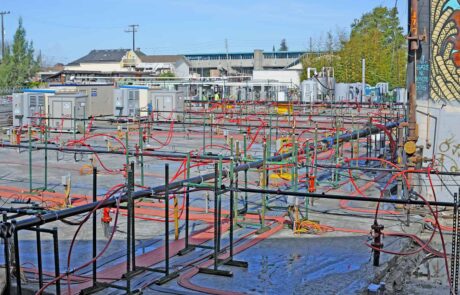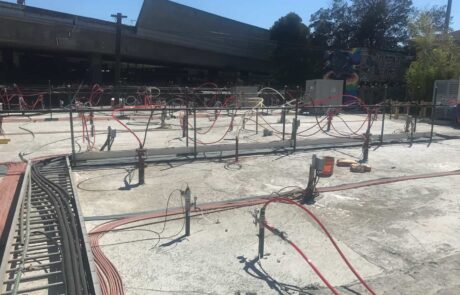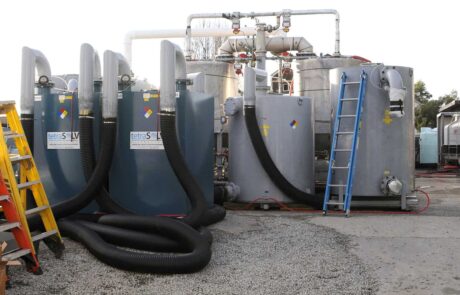AMCO Chemical Superfund Site, Oakland, CA
The AMCO Chemical Superfund site is a National Priorities List (NPL) site that operated as a bulk chemical storage and repackaging facility from the 1960s to 1989 in a mixed residential/industrial area in Oakland, California.
The EPA performed a non-time critical action (NTCRA) to address chlorinated solvents and petroleum products that affected groundwater at depths ranging from approximately 3 to 45 feet below ground surface. The primary objective was to reduce potential risks to human health associated with vapor intrusion into residences and structures around the site by recovering chlorinated volatile organic compounds (VOCs) from the central portion of the site to the extent practicable within the scope of the NTCRA.
Under a task order for the EPA Region 9 Remedial Action Contract, OTIE prepared an engineering evaluation/cost analysis (EE/CA) that identified in-situ thermal heating using electrical resistive heating (ERH) technology as the preferred alternative, predicting cost savings of more than $15 million compared to other potential remedies. OTIE supported preparation of an action memo for the AMCO site, in which the EPA selected ERH for implementation. OTIE’s technical team designed and constructed the ERH treatment system and operated it for ten months. The system included 175 underground electrodes installed in 69 boreholes throughout the site to heat the soil and groundwater to temperatures up to 212°F (the boiling point of water) and 79 groundwater and vapor extraction wells to capture vaporized contaminants, steam, and hot groundwater using vacuum extraction technologies.
OTIE analyzed nearly 40,000 vapor samples during ERH operations (~5 per hour, continuously) using an innovative “near real-time” field Gas Chromatogram Mass Spectrometer (GC/MS) allowing for rapid, data-driven operational decision-making and enhanced system optimization. We collected soil samples from borings and for waste profiling, and collected and analyzed hot groundwater/hot soil vapor using an OTIE-designed sample cooling and condensation system.
At a community open house on March 18, 2017, OTIE celebrated with the West Oakland South Prescott community to mark the startup of the innovative $10 million treatment system. OTIE switched off the ERH electrodes on December 15, 2017, and discontinued vapor and groundwater extraction on January 15, 2018, after successfully removing over 35,000 pounds of contaminants in ten months of system operation.



